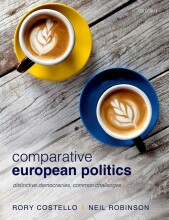Electoral systems - Electoral formula
10 important questions on Electoral systems - Electoral formula
What is the majoritarian system?
What is the SMP system?
What are the most-heard critics on SMP-systems and what is the solution?
- Higher grades + faster learning
- Never study anything twice
- 100% sure, 100% understanding
What is the scope of proportional systems?
What does List PR mean as an electoral system?
What is STV in electoral systems?
What are the differences between STV and AV?
What does reinforced proportionality mean?
Which two revolutions put pressure on majoritarian systems in the course of the 19th century?
What is limited PR (Carey and Hix 2011) an why does it sacrifice proportionality?
The question on the page originate from the summary of the following study material:
- A unique study and practice tool
- Never study anything twice again
- Get the grades you hope for
- 100% sure, 100% understanding
































